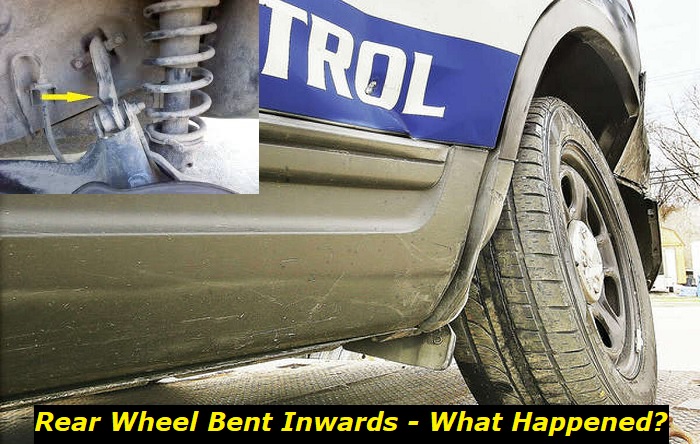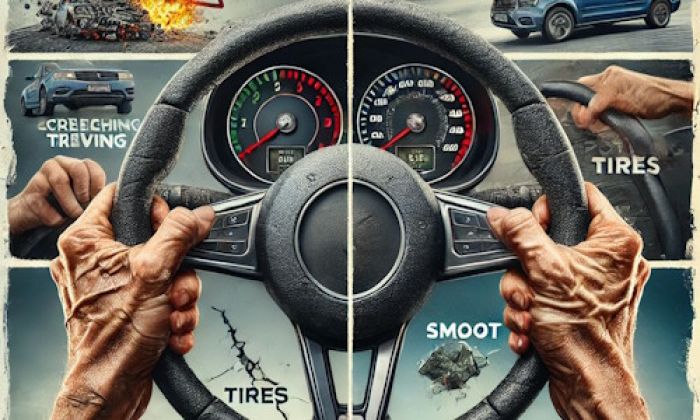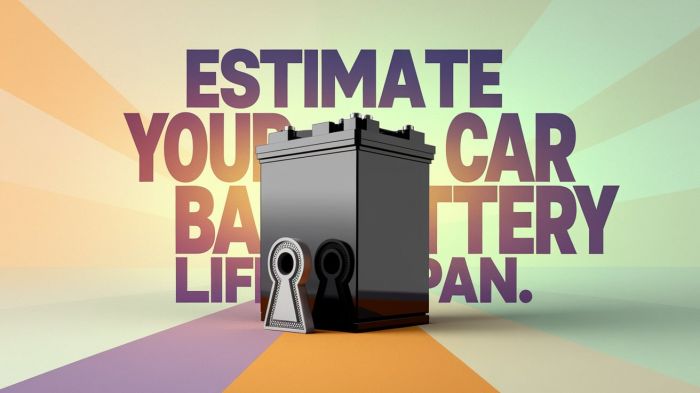If you got in an accident and your rear wheel is bent inwards, there are several possibilities to consider. First, you should drive the car to a professional mechanic, or if the damage is too bad to drive, have a tow company help you with the movement.
Rear suspension problems highlights
- Level of importance:medium
- Common reasons:road potholes, speed bumps, accidents, normal wear
- DIY inspection:possible but very complicated
- DIY repair:usually,impossible
- Average price in shops:$250 - $800
- Average time:3 - 6 hours
- If ignored:fatal failure, no drive, expensive repairs

What Causes the Wheel to Bend Inwards after an Accident?
There are several explanations for why you have a wheel bent inwards after an accident. The most common explanation is that you had a collision at an angle. You either hit something, or you were hit. On rare occasions, the wheel itself may also bent, depending on the impact of the collision.
If you were in an accident and your wheel bent inwards, several fixes can get you back on the road. The first course of action is to determine the exact cause of the bend. If the accident impact is the cause of the bend, you might have to tow the vehicle to a mechanic. However, if the wheel was already leaning inwards before the accident, you can fix it using simple tools.
Additionally, if the wheel is badly damaged and bent inwards, you may have to replace it altogether.
If you were in an accident and your rear wheel was bent inwards, one or more of these components may be damaged.
- The Struts
The struts are smaller parts of the suspension system. They are located right above the wheels and are responsible for absorbing the road abnormalities such as potholes and sharp bumps. Due to the struts' proximity to the wheels, they are the first possible casualties of a wheel bent inwards after the accident.
Initially, driving with broken struts makes your ride bumpy. However, the constant shaking and vibrations may wear out other parts of the vehicle over time.
Ideally, replacing only the broken strut is okay, but it is advisable to replace them in pairs every time you do it. The replacement cost of the struts will depend on the vehicle you are driving.
- The Axle
If an accident left you with a bent wheel, it might also indicate a bent axle. The axle is responsible for transferring power from the transmission to the wheels. Most cars have two axles, one connecting the rear wheels to the body and the other to the front wheels.
The axle may be bent if your steering wheel vibrates or you hear strange noises when you apply breaks. A faulty axle must be fixed before the car returns to the road.
Since the axle is linked to the wheels on both sides, a bent wheel may also indicate that your axle is bent.
- Lower Control Arm
Like the struts, the lower control arm minimizes road noises and abnormalities caused by bumps and potholes. However, unlike the struts, a damaged lower control arm may make it even impossible to steer the vehicle.
If the rear wheel is bent inwards after an accident, there is a possibility that this component is damaged. You should plan a replacement or repair of the lower control arm before it causes more harm to you or the vehicle.
- The Suspension
A bent suspension is one of the common explanations for a bent wheel after an accident. It is also an expensive repair. If you were in an accident and suspect that the suspension is bent, you should take the car to a professional repair shop for a proper diagnosis.
Your professional mechanic has the right tools for SAI angle and camber verification. They will use these measurements to determine whether your suspension is bent. If it is, expect to spend up to $5,200 for a full suspension repair. This cost varies depending on your car. The least you can pay is $1,100.
- The Frame
If you find yourself checking for a bent vehicle frame, your accident must have been fatal. These damages only occur when the vehicle is involved in a high-impact collision. It is one of the most severe indications of a rear wheel bent inwards. So, if your wheel is bent and you were involved in a high-speed collision, you should consider taking the vehicle to your mechanic for diagnosis.
As the frame is a crucial part of the body, you need to take it to a specialized body shop to have the frame put back in place. Specialized body experts have specialized tools and hydraulic machines that use intense pressure to push the bent frame back into its place.
This is another expensive repair cost. It would normally cost around $850. However, the price may vary depending on your vehicle model and the severity of the damage.
Types of Wheel Balancing
Wheel balancing is a service performed on any wheel out of balance. It is a service, not a repair. This means you don't have to wait until you are involved in an accident to have a wheel balancing service visit.
Repairing a wheel that's bent inwards costs more than just balancing. Check out these three types of wheel balancing.
- Rim balancing is the most common type of wheel balancing. In this type, the balancer moves the center of gravity in each direction to balance the rims.
- The hub balancer is the second type of wheel balancing, in which the balancer moves the center of gravity in all directions to balance the wheel.
- The spoke balancer moves the center of gravity in a specific direction to balance the spokes.
Three Types of Wheel Balancers: How They Work
If you have a rear wheel bent inwards, you will have it fixed. The wheel must be balanced even after the above components have been repaired. There are several types of wheel balancers. However, here we are focusing on the three most common ones.
- The Hydraulic Balancer is the oldest type of wheel balancer. It uses pressurized water to get the job done.
- Pneumatic Wheel Balancer uses compressed air to fix bent wheels.
- Electric Wheel Balancer uses electric current.
Each of these three has its pros and cons. The hydraulic balancer, the oldest type, is the easiest to use.
Will My Insurance Cover the Repair Costs of a Bent Wheel?
There are different occasions that would warrant your insurance company to cover the repair costs of your bent wheel and every cost involved. Whether the insurer will do it or not depends on the total repair cost compared to your vehicle's value and insurance policy. It will also depend on whether you are responsible for the bend or someone else is.
- If you were hit by someone else and the impact left your wheel bent inwards, the other driver's liability policy will cover the repair costs of your bent wheel and every other cost involved. The insurance covers the repair cost if it's not above the total value of your vehicle. The insurance company has the right to declare your car damaged beyond repair if it requires more to repair than it would fetch if sold.
- If you hit someone and sustain a bent wheel, your collision policy will cover the repair costs of the bent wheel. A collision insurance policy covers repair costs even if you are the one to blame for the accident. However, this comes with a deductible. If you have not met your yearly deductible, the insurance company takes the repair money from your total insurance cheque.
- If you are a hit-and-run victim, you might end up paying for the entire repair cost unless you have uninsured motorist coverage. This policy comes to your rescue when the person responsible for the accident does not have enough coverage to meet the repair costs or flees the scene before you can exchange insurance details. This is an optional coverage in most states. If you have this policy, you must call the police and record a statement before leaving the scene. You share this report with your insurance agent as you file the claim.
In Conclusion
As a wheel bent inwards after an accident may indicate many things, it isn't easy to pinpoint one specific explanation until a professional runs a deep diagnosis. Some damages may be severe; others may be minor. But you cannot tell until you are sure.
For these reasons, it is highly recommended that you take your vehicle to a professional repair center for diagnosis immediately after you notice that your rear wheel is bent inwards. It is easier to evaluate the situation once you know what is broken, what needs repair, and what needs to be replaced.
About the authors
The CarAraC research team is composed of seasoned auto mechanics and automotive industry professionals, including individuals with advanced degrees and certifications in their field. Our team members boast prestigious credentials, reflecting their extensive knowledge and skills. These qualifications include: IMI: Institute of the Motor Industry, ASE-Certified Master Automobile Technicians; Coventry University, Graduate of MA in Automotive Journalism; Politecnico di Torino, Italy, MS Automotive Engineering; Ss. Cyril and Methodius University in Skopje, Mechanical University in Skopje; TOC Automotive College; DHA Suffa University, Department of Mechanical Engineering






Add comment